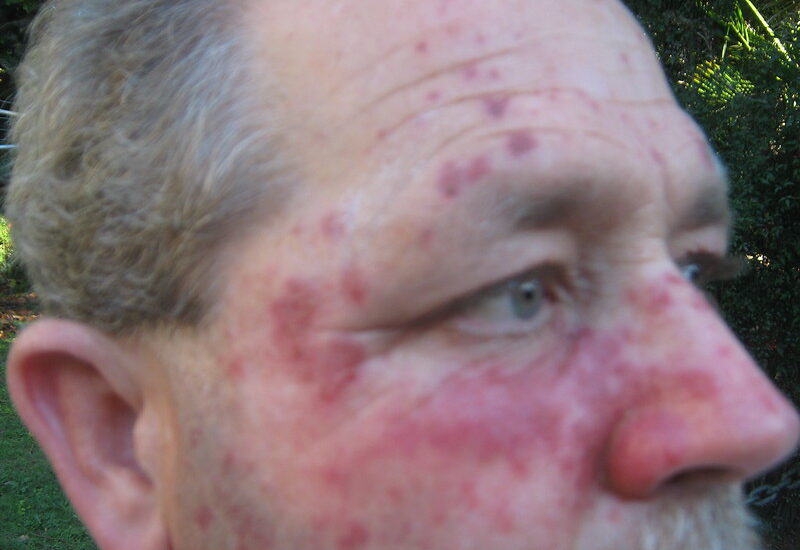This guide provides a step-by-step explanation to help you take care of your skin after efudex, and heal skin issues that might arise during and after the treatment process.

Table of Contents
Understanding Efudex and Its Effects on Skin
Efudex is a topical chemotherapy drug commonly prescribed for conditions such as actinic keratosis, basal cell carcinoma, and Bowen’s disease. It targets abnormal skin cells by interfering with their DNA and RNA, preventing them from growing and multiplying. (Source)
Because it is applied directly to the skin, its primary effects—and side effects—are localized to the application area. While it is successful in treating precancerous and cancerous lesions, it often leads to skin irritation, redness, and inflammation as it acts not only on abnormal cells but also affects some healthy skin cells around the treated area.
Initial Side Effects of Efudex
The most immediate effects post-Efudex treatment are generally localized to where you’ve applied the medication. You will most likely observe redness and inflammation within a day or two of starting the treatment. Over time, the skin may become flaky, crusty, or scaly. It is also common to experience itching or a burning sensation.
These are not just side effects but are usually signs that the medication is acting on the abnormal cells. However, these initial side effects can cause discomfort and require careful management to prevent exacerbation.
Immediate Post-Treatment Care
Immediate post-treatment care is crucial for mitigating side effects and promoting healing. First, cleanse the treated area gently using a mild soap without fragrances or harsh chemicals, as these can further irritate the skin.
Use lukewarm water to rinse off the soap and then pat dry the skin using a clean, soft towel. It’s essential to pat rather than rub to avoid causing more irritation.
Right after drying, apply a hypoallergenic and non-alcoholic moisturizer to maintain skin hydration. This helps create a protective barrier and provides relief from dryness and flaking.
Check out this Cetaphil Body Moisturizer listed on Amazon.
Long-Term Care for Skin After Efudex
For the weeks and even months following your Efudex treatment, continuous skin care is crucial. Moisturizing remains a key part of this regimen. Depending on the advice of your dermatologist, you might be recommended a specialized scar cream or gel to enhance skin recovery.
Sun protection is absolutely vital in this phase. The treated skin is more vulnerable to UV radiation, which can lead to further complications. Therefore, always use a broad-spectrum sunscreen with a minimum SPF of 30, and consider wearing protective clothing like long sleeves and a hat when you go outdoors. (Source)
The Neutrogena Ultra Sheer Dry-Touch Sunscreen Lotion from Amazon is a good option as it’s a broad spectrum sunscreen with SPF 50.
When to Consult a Doctor
If you experience symptoms beyond the common side effects—such as severe pain, extreme swelling, or signs of infection like pus or increased, spreading redness—it is imperative that you consult your healthcare provider as soon as possible. These could be signs of complications that may require medical intervention.
Scheduled follow-ups are also crucial for monitoring healing and discussing any concerns with your healthcare provider. They may advise additional treatments or changes to your post-treatment skin care regimen based on how your skin is responding.
Skin After Efudex [Other Issues]
Below are links to articles on this site that cover other issues that might affect your skin after Efudex usage.
Care for Skin After Efudex Treatment: A Comprehensive Guide
What to Put on Skin After Efudex Treatment: Your Easy Guide
Itchy Skin After Efudex: Your Comprehensive 411 Guide

